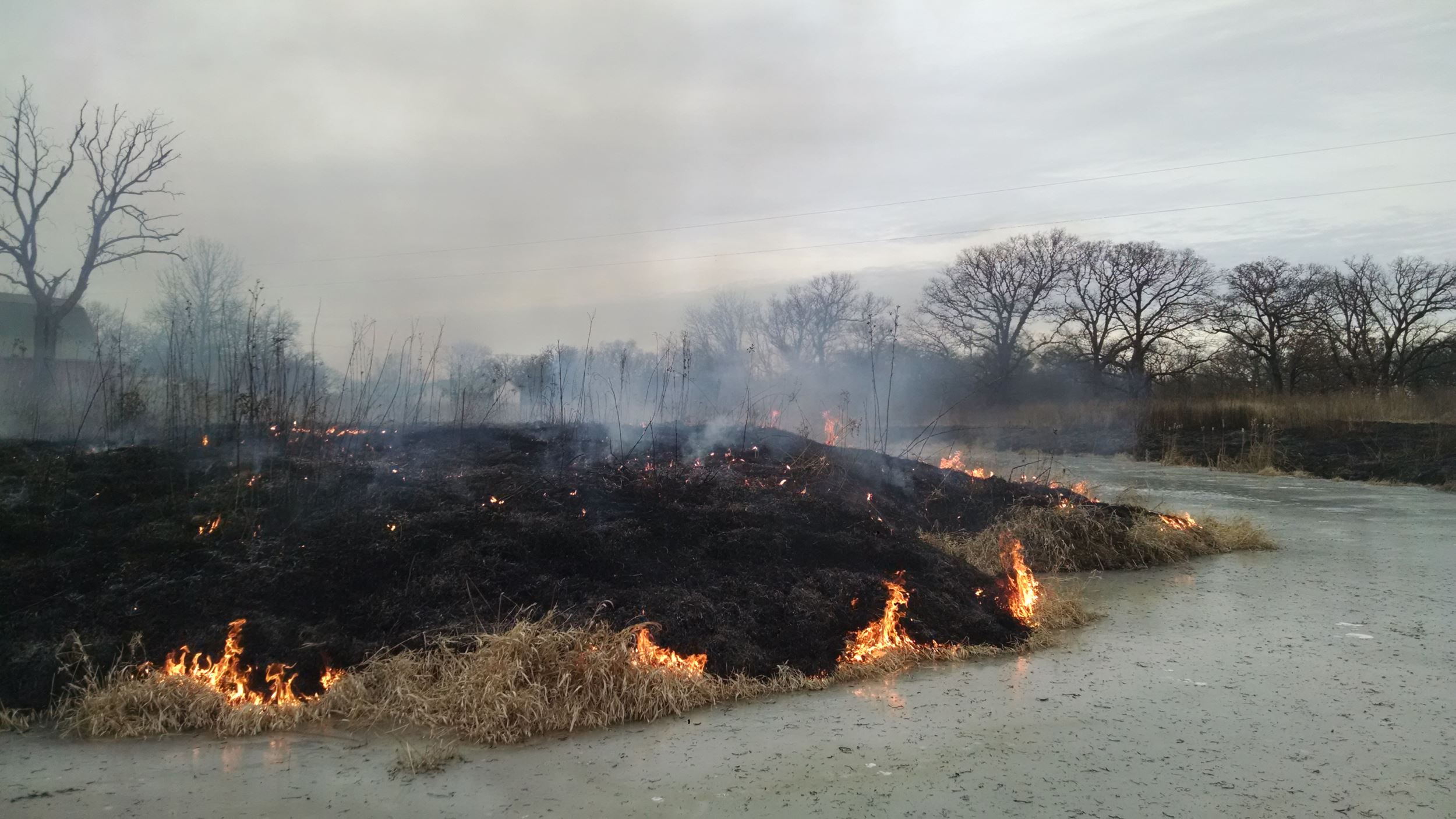Prescribed fire in the winter?
By Ryan Schmidt on January 30, 2017 in Blog

Land stewardship staff conduct a burn in January at Snyder Heritage Farm in Polk County. Photo by Ryan Schmidt
Here at Iowa Natural Heritage Foundation, we typically think of conducting our prescribed burns in the spring (March-early May) and fall (late October-November). Spring and fall offer favorable weather conditions and an ideal time frame for prescribed fire. However, we always keep our eyes open for the occasional opportunity to perform a burn during the winter months.
Winter usually doesn't offer favorable weather to burn a prairie or woodland, but every so often a small window opens and allows us to get fire on the ground. This winter, we have seen little snow accumulation in southern and central Iowa, while more snow has been present in the northern third of the state. Since much of our state has not been covered in snow, opportunities to utilize prescribed fire as a tool for stewardship have popped up.
Why burn in the winter?
Winter burns allow us the opportunity to change or diversify the typical fire schedule that we follow. We often get caught up in our spring and fall burn seasons, which may lead to regular or consistent burn timing. Regular burning, or burning of a particular piece of land at the same time of year over a long period of time, can actually begin to change species presence or abundance. When trying to reach maximum native diversity, this can be an issue. We do our best to change or randomize our fire schedule to ensure that we don’t favor or drive out certain species over time. Variation in the timing of our burns also allows us to mimic the random nature of historic burns that occurred on Iowa’s landscape.
Also during the winter months, many small vertebrates and invertebrates are dormant or overwintering. This offers an opportunity to limit the negative effects on critters such as snakes, turtles and a variety of insects.
Winter burning also alleviates some of the pressure from our upcoming spring fire season. As typical of conservation agencies in Iowa, there is never enough time to accomplish all of our prescribed fire goals in any given year. So, if we can knock out a few burns in the winter, our list of spring burns becomes much more manageable.
Of course, each season of the year offers pros and cons in relation to prescribed fire and its effects on the land. If you're thinking about burning in the winter, as always, take into account the goals and objectives for your land. For example, it's possible for winter prescribed fires to eliminate much needed winter habitat for wildlife. This is a valid point and if your goals for your property are to maintain winter wildlife habitat, then a winter fire may not be the best option. Burning a portion of your available habitat, which leaves some refuge for wildlife, may be one way to alleviate this issue. As in all prescribed fire planning, be sure to weigh your options and be sure that your use of fire is conducive to your long-term goals for the land.
For more information about prescribed fire, contact Ryan Schmidt, INHF land stewardship director, at rschmidt@inhf.org or 515-288-1846.